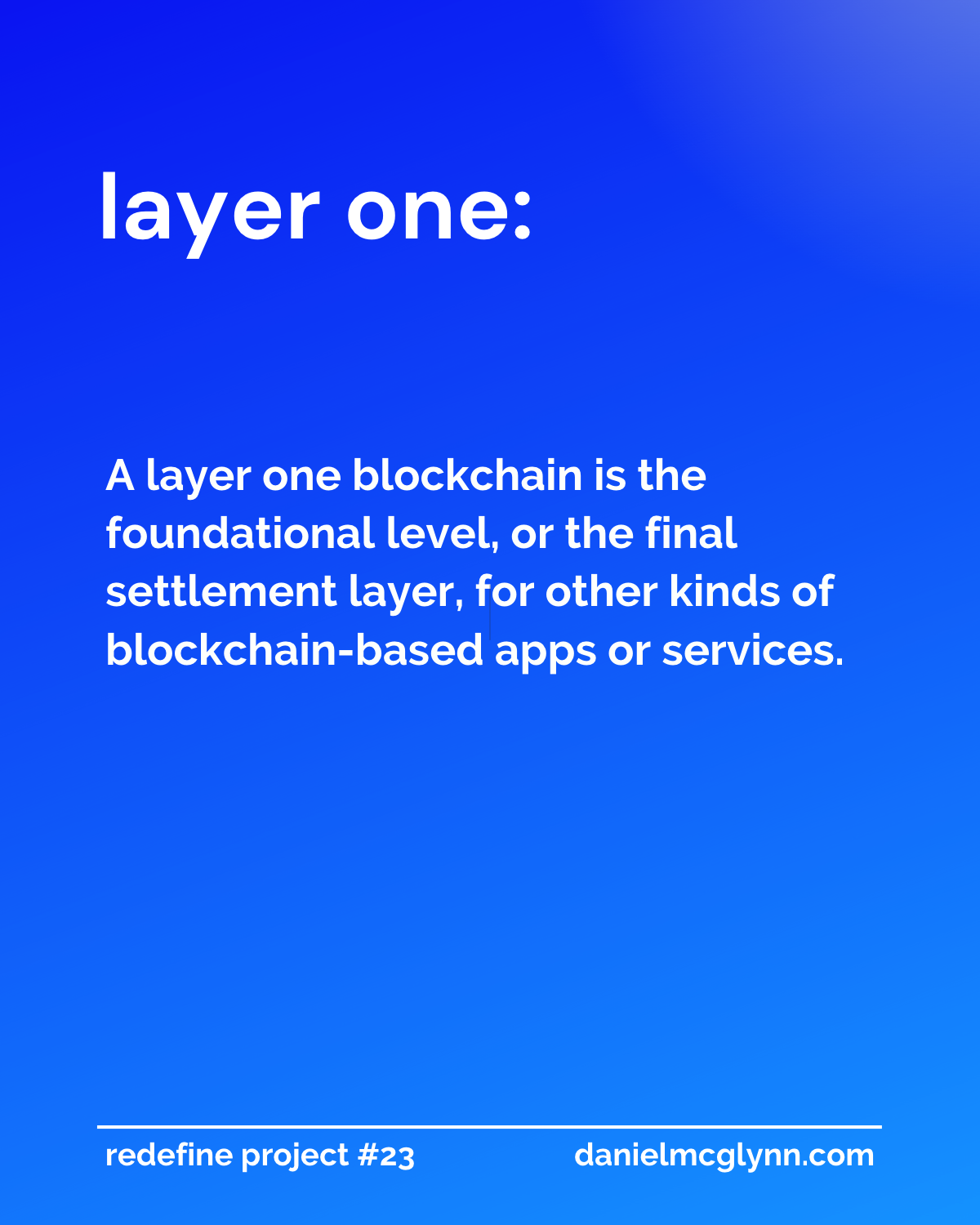A layer one blockchain refers to the base layer of a protocol. A layer one blockchain can serve as the foundation, or the final settlement layer, for other kinds of blockchain-based apps or services, which are built on top.

Collectively, apps and services that leverage an underlying blockchain — and access its data or use the blockchain’s asset as a means of settlement — are built on what is known as layer two.
One way to think about the difference between layer one and layer two to use roadway analogies.
Layer one blockchains are like highways. They are designed with specific goals in mind. Usually, with the most popular layer one blockchains, such as Bitcoin and Ethereum, the goals are decentralization, security, and utility.
As blockchain tech grows in popularity and use, having only a massive highway-like layer one tech is proving limiting. This is where secondary roads, or surface streets, in the form of layer two technologies come in handy.
In times of high traffic on a layer one blockchain, or during major network usage, the network fees and/or settlement times can start to increase. (Read more about how this is happening with Bitcoin network fees because of the newly created Ordinals.
Using our highway analogy, one issue is that as layer one blockchains experience more traffic, it takes longer to settle transactions and the tolls along the road increase. In order to grow the everyday use cases for the major layer one blockchains, transaction speed and transaction fees both need to be addressed, which is where layer twos come in.
Additionally, there are times when accessing the foundation, layer one blockchain, aren’t really needed or necessary and doing so might cause additional network strain and cost — like trying to conduct a micro payment, for instance, or when additional layers of privacy are needed beyond what is available on the layer one public ledger.
The combination of having a robust and secure layer one blockchain as a base layer (or main
protocol) as a unit of settlement and secure data storage, while at the same time having more functionality and specific utility (especially in regards to scaling and cost) helps achieve more of the goals of blockchain tech.